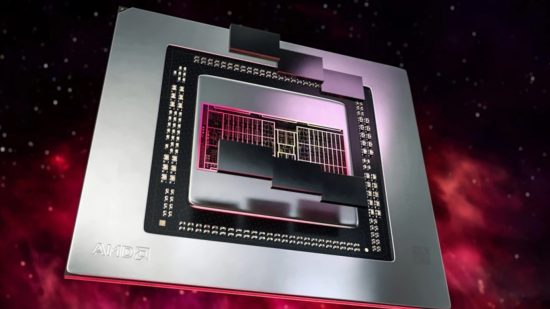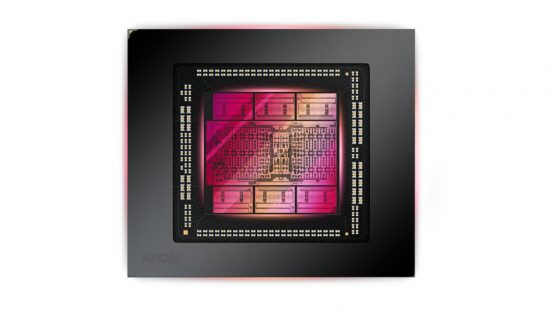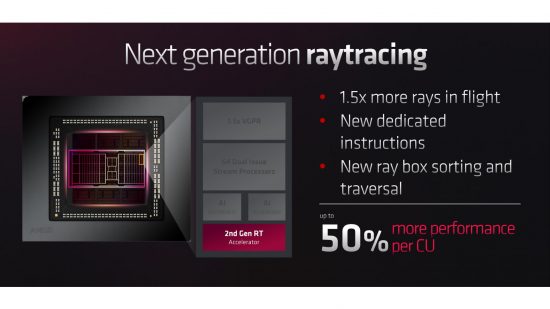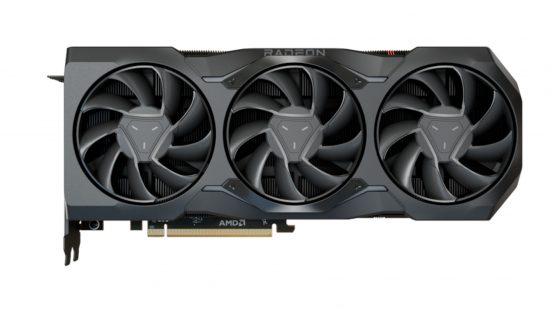AMD has lifted the lid on its latest RDNA 3 GPU architecture, which promises hardware AI acceleration and faster ray tracing performance compared to RDNA 2.
AMD outlined two cards – the Radeon RX 7900 XTX and 7900 XT, which are planned to launch at at $999 US (approx. £1,068 inc VAT) and $899 (approx. £961 inc VAT) respectively, massively undercutting the prices of Nvidia’s latest RTX 4000-series GPUs.
RDNA 3 sees AMD shifting to a chiplet-style design, which it’s also used in its CPUs from Zen 3 onwards. In this case, the main GPU is called the Graphics Compute Die (GCD) – a 300mm² chip that’s fabricated on TSMC’s 5nm process, and this is surrounded by six 37mm² Memory Cache Dies (MCDs) which are produced on TSMC’s 6nm fabrication process, with AMD claiming a 5.3TB/sec interconnect bandwidth between the chiplets.
The GCD is split into compute units (CUs), and with RDNA 3 each CU contains 128 stream processors, a single 2nd-generation RT processor for ray tracing and two AI accelerators. We don’t have much detail on the latter, or what AMD plans to do with them, but it’s a feature that’s been lacking on AMD GPUs until now, compared with the Tensor cores on Nvidia GPUs, which power the green team’s DLSS resolution scaling tech.
Ray tracing performance has also been improved, with AMD now stating that the new chips have ‘new ray box sorting and traversal.’ AMD claims that the new GPUs improve ray tracing performance by up to 50 per cent per CU compared to RDNA 2 chips.
In terms of the cards themselves, a Radeon RX 7900 XTX GPU will have 96 CUs, giving you 12,288 stream processors, 192 AI accelerators and 96 RT cores, along with 96MB of 2nd-generation Infinity Cache.
These cards will also be equipped with up to 24GB of GDDR6 memory attached to a 384-bit wide memory interface, giving you much more memory bandwidth than the 256-bit wide interface on the Radeon RX 6900 XT.
Meanwhile, the Radeon RX 7900 XT has 84 CUs enabled, giving you 10,752 stream processors, along with 80MB of Infinity Cache and up to 20GB of memory attached to a 320-bit wide memory interface.
AMD has also taken a new approach to clock speeds with RDNA 3, decoupling the front end frequency from the shader clock. It’s the latter that’s now quoted as the game clock (2300MHz on the 7900 XTX; 2000MHz on the 7900 XT), but the front end runs at 2500MHz.
AMD is making some strong claims about performance, including that the Radeon RX 7900 XTX hits 109fps in Assassin’s Creed Valhalla at 4K with maximum settings. While we obviously have a different test rig from AMD, if these figures are in the same ballpark on our setup they’re in the same league as the GeForce RTX 4090 in our tests, which averaged 108fps.
It’s also much faster than the Radeon RX 6950 XT, which averaged 75fps in this game. AMD also claims the Radeon RX 7900 XTX can hit 135fps in Doom Eternal with ray tracing enabled at 4K.
The new GPUs are scheduled to launch on 13 December this year.



